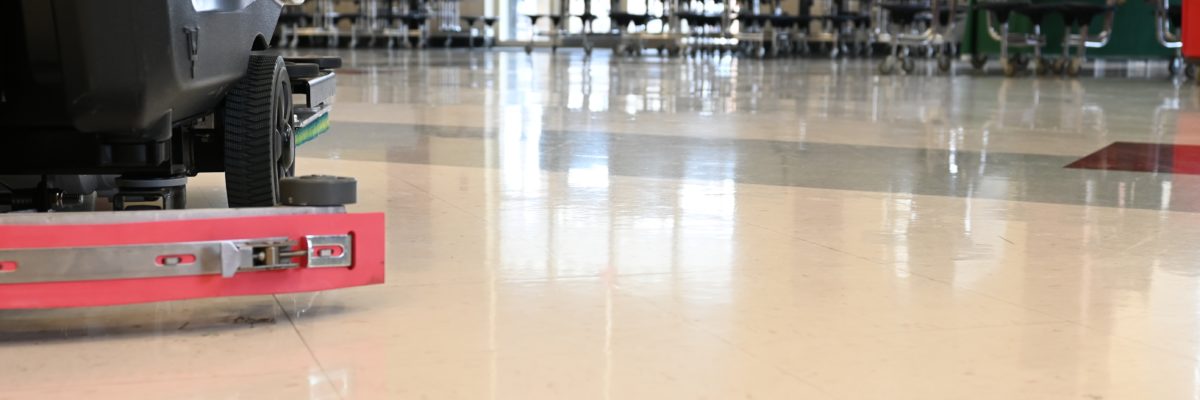Infection control has always been integral to the environmental cleaning process, however, over the last two years it has become a critical necessity. While the COVID-19 pandemic drew attention to the importance of infection prevention, it also triggered a dramatic uptick in unsafe cleaning and disinfection practices with potential health risks.
Disinfecting is now ubiquitous across all industries, yet few sectors have employed dedicated infection control specialists with expertise in best practices for safer processes. This article will provide an inside look at some of the hazards posed by legacy practices and offer a route toward safer approaches to infection prevention.
As hidden hazards come to light, cleaning professionals are discarding the assumption that traditional sanitization methods are tried and true. For instance, the age-old belief that the most potent disinfectants are sodium hypochlorite (bleach) or quaternary ammonium compounds (quats) is now viewed with caution due to serious health concerns and the probability of lower efficacy. Using too many different chemicals for each cleaning task is another example of how conventional procedures have inadvertently caused safety concerns. Not only is this practice wasteful and inefficient, but it also creates a confusing labyrinth for cleaning staff that can significantly increase the risks of error.
The laser focus on maintaining more hygienic environments to prevent infectious outbreaks will remain long after the current pandemic subsides. The public will continue to expect higher levels of cleanliness from every type of facility. Therefore, facility managers must take proactive steps sooner rather than later to establish responsible strategies for safer and more sustainable environmental cleaning.
Four key components contribute to safer infection prevention practices: chemistry, protocols, education, and sustainability. The first stop on the route is chemistry:
1. Evaluate cleaning chemicals and initiate best practices
Since chemicals are fundamental to virtually every environmental cleaning process, all products should be evaluated against an ideal chemical profile based on the following seven criteria: range of use, safety data, registration with the U.S. Environmental Protection Agency (EPA), efficacy, contact time, application, and cost.
Improving safety starts with assessing all the cleaning products a facility uses to identify those that don’t measure up to the ideal profile, then replacing them with safer alternatives that serve multiple purposes. The concept of chemical standardization is still relatively new to the cleaning industry but is rapidly gaining popularity.
Imagine having only one set of chemical instructions, rather than the usual seven to 10, to accomplish a wide array of cleaning, sanitizing, and disinfecting applications for surfaces, floors, windows, furniture, walls, restrooms, and more. Standardizing chemical usage helps reduce complexity and eliminate failure points that can directly impact safety and efficacy.
Low toxicity is at the top of the list of ideal properties for safer cleaning chemical alternatives. Nowadays, there are chemistries available that are both safer as well as highly effective. Product safety data sheets (SDS) are the key to finding products with optimal safety ratings across the board including a triple zero hazardous materials identification system (HMIS) rating, neutral pH, and an EPA category IV rating for lowest inhalation toxicity. Avoiding the use of products known to cause asthma and other health hazards should always be a top priority.
Of course, the other top safety consideration is efficacy—specifically, efficacy against a wide range of bacteria, viruses, and fungi. Superior biocidal performance is crucial but only if the chemical is EPA-registered as effective against the most prevalent pathogens, such as SARS-CoV-2 (List N), Norovirus (List G), and C. Auris (List P), as well as multidrug-resistant organisms (MDROs) like C. difficile (List K), MRSA, and vancomycin-resistant enterococci or VRE (List H). Moreover, the contact time it takes to inactivate these pathogens should be four minutes or less.
Additionally, consider a product that has earned the EPA’s highest level emerging pathogen claim (EPC) against the hardest-to-kill small non-enveloped viruses. Though rare, chemistries exist that are also EPA-registered to kill the biofilm bacteria responsible for many healthcare-associated infections (HAIs). Chemicals classified as Continuously Active Disinfectants (CAD) are rarer still, as they can sustain residual efficacy for at least 24 hours.
Several environmental factors also impact disinfectant efficacy. Environmental staff should confirm the chemistry has been tested in the presence of soil and proven to be resistant to organic matter, as well as sunlight.
The good news is there are a handful of chemistries that check every box. A few are even capable of achieving maximum efficacy at lower concentrations, further mitigating exposure risks.
At the end of the day, ease of application and affordability are the final deciding factors. If dilution is easy and accurate, staff are more efficient and effective. A product that is also economical to purchase, ship, and store is a bonus for everyone.
2. Address protocols to mitigate cross-contamination risks
Many facilities outside of health care don’t even realize cross-contamination is an important topic to address. Yet, even in the most hygienic environments, viral droplets, an ill person, or a contaminated cleaning cloth can infect surfaces. Stopping the contamination cycle requires dedicated process-improvement measures.
Follow three steps to limit the risks of cross-contamination. First, consider utilizing touchless electrostatic sprayer technologies that enable quick and complete surface disinfection with zero incidences of cross-contamination. Second, incorporate a disposable wipe system into existing protocols to prevent transferring contaminants from the surface to surface. If using microfiber cloths, follow the manufacturer’s guide for applications and replace the cloths regularly. Finally, avoid disinfectants like quats that often bind to microfiber cleaning cloths and leave surfaces vulnerable to recontamination.
Best practices for preventing cross-contamination in health care environments suggest pre-treating patient rooms and care areas with an electrostatic sprayer and a sporicidal disinfectant. For most pathogens, the appropriate dwell time is four minutes in compliance with the Joint Commission standards for hospital accreditation.
3. Educate cleaning staff on proper usage and protocols
Even when safer cleaning and disinfection products are added to the mix, infection prevention improvement plans will fail if staff members are not trained on proper usage and protocols. Again, infection control begins with an assessment: Evaluate all current cleaning protocols to identify gaps, inefficiencies, and errors, then use the data to develop training programs tailored to improving processes.
Targeted education should cover chemical differentiators, SDS, personal protective equipment (PPE), labels, dilutions, and application. It also should include pathogen training with appropriate dwell times, wipes program training, and best practices for achieving enhanced disinfection to mitigate cross-contamination. Supplement education with signage as a reminder of essential safety directions.
When all is said and done, staff should have a clear understanding of how to use all cleaning equipment and chemicals effectively, efficiently, and safely.
4. Follow the roadmap to safety and sustainability
Once facility managers adapt products and protocols to achieve safer infection prevention processes, facilities will realize additional advantages. Ideal cleaning chemical properties naturally point to eco-friendly options that are more stable and sustainable, thereby lowering carbon footprints while supporting health and safety.
The reality is, even though infection prevention is now a critical necessity in all sectors, it should not necessitate putting staff and building occupant health at risk in the process when there are effective alternatives that will not sacrifice safety. Creating a roadmap to safer infection prevention practices isn’t easy, but it will lead to a healthier, more sustainable future.
 Rich Prinz is the global vice president of sales and marketing for EvaClean by EarthSafe, a safer, sustainable infection prevention solution. Prinz has over two decades of experience in leadership positions at major health care, hospitality, and industrial supply organizations and has developed process improvement initiatives for health care networks throughout the country.
Rich Prinz is the global vice president of sales and marketing for EvaClean by EarthSafe, a safer, sustainable infection prevention solution. Prinz has over two decades of experience in leadership positions at major health care, hospitality, and industrial supply organizations and has developed process improvement initiatives for health care networks throughout the country.
